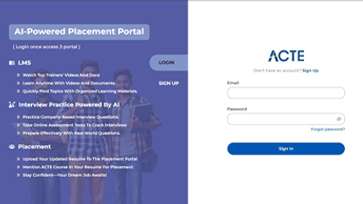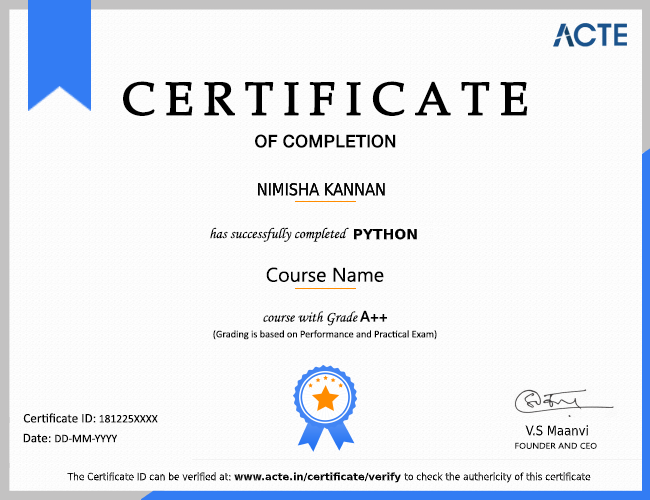Liferay Fundamentals Online Course offers Liferay Fundamental Master's Degree in order to learn Liferay's capacities. This course addresses key topics of how you can benefit from the experience of your portal. You may learn the best ways to generate, present and manage information. Our Liferay Fundamentals Course is created to allow you to detect user access with permissions and the training providers will help you gain a detailed knowledge of how Liferay can be used to meet all your company demands. Our basic Liferay Fundamentals Online Course aims at providing quality education, with a practical approach, covering a sound basic understanding of core principles. Such exposure to current industry applications and scenarios will assist students to develop their skills and implement best practices in real-time projects.
Additional Info
About Liferay Fundamentals :
- It’s Open Source and places a robust emphasis on following requirements, rather than reinventing the wheel.
- It’s primarily based totally on Java EE and closely leverages OSGi and numerous different famous technology for the Java Platform.
- It is primarily based totally on a modular structure and allows following a modular improvement paradigm to your personal tasks.
- You can construct your personal net programs, portlets, or cellular apps on pinnacle of it.
- It gives mature improvement gear, at the same time as staying agnostic so that you can use gear you prefer.
- It’s all approximately reusing, offering reusable frameworks and libraries and permitting you to create your personal.
Open Source and primarily based totally on Standards, Liferay DXP is each Open Source and constructed withinside the open, following a collaborative improvement version. That way that you may observe new improvement as it’s happening, make remarks on it, and make contributions!
Here are a few gear that you may use to do all this :
Our ticketing device. All product adjustments, together with all computer virus fixes, improvements, and new functions begin with a price price tag created in JIRA. We have numerous tasks there, however the principal one for monitoring Liferay DXP paintings or for reporting insects you find (with as many info as you may and steps to reproduce, of path) is LPS.
GitHub : The domestic of our supply code. You can use it to peer the code adjustments as they show up and additionally to ship pull requests for improvements. There also are many repos, however the principal one is liferay-portal.
Forums : It’s in which our network receives collectively to proportion ideas, discuss, and collaborate.
Go beforehand and ask your questions and assist others ask theirs.
Blogs : Read the today's information, advice, and first-class practices from key middle builders and our maximum lively network members.
Participate : Learn a way to get began out participating. There are alternatives for all stages of knowledge and time availability. In addition to being Open Source, Liferay is likewise closely primarily based totally on requirements. This is exceptional information to your venture, because it substantially reduces the lock-in on Liferay.
That additionally encourages us to enhance constantly. Here are a few key requirements Liferay DXP helps. Liferay helps a huge variety of the OSGi own circle of relatives of requirements thru its personal implementations and additionally integrates the excessive exceptional implementations of the Apache Felix and Eclipse Equinox tasks (which we additionally collaborate). Here are a number of the maximum applicable supported requirements :
- OSGi runtime: Allowing any OSGi module to run in Liferay DXP
- Declarative Services: Supports a dynamic aspect version for Liferay improvement.
- Configuration Admin: Lets you create notably configurable programs that may be reconfigured at the fly. Liferay gives an auto-generated UI to alternate the configuration of any aspect that leverages this fashionable.
Architecture :
Liferay’s layout desires have from the start been to provide you all of the gear to create precisely the net presence you've got got in mind. To gain this, the product need to do those matters :
- Provide a usable default configuration and interface
- Ship with first-class-of-breed apps that you may use to construct webweb sites quickly
- Make the UI customizable at any degree of element from small tweaks to a entire replacement
- Make the apps customizable at any degree of element
- Provide a strong improvement platform upon which you may construct and proportion new first-class-of-breed apps These desires are actually finished to the furthest volume ever in Liferay’s history, and it’s all due to our new modular structure. Imagine an surroundings in which each piece of capability is an impartial module.
The modules claim 3 vital matters :
- The capability they put in force or outline
- Their dependency on different modules
- Their precedence relative to their capability
- Using this information, the box can begin all of the modules that satisfy their definitions, implementations, dependencies, and priorities. Anything a developer desires to do is carried out as one or greater modules. If it’s a brand new utility, that utility can rely on current modules and outline a dependency on them. This allows you to apply capability that’s already there with out rewriting it your self to your app. If it’s a customization, in lots of instances it’s only a easy rely of defining your customization with a better precedence than the present capability.
This is the electricity of a modular structure.
Modules :
All new programs, extensions, and customizations constructed on Liferay are constructed in a modular manner. A module is the unmarried unit of distribution and deployment in a modular structure. In the spirit of following current requirements, Liferay has leveraged a fixed of very effective requirements referred to as OSGi. OSGi defines, amongst different matters, how modules can rely on every different and communicate. It additionally defines the packaging layout for modules: OSGi bundles. An OSGi module is only a standard JAR report, acquainted to Java builders as a ZIP report containing compiled code, templates, resources, and a few meta information.
Services :
-
One thing of contemporary-day software program structure is the belief of offerings. These are independently strolling portions of code that offer particular capability while referred to as. They function much like offerings withinside the actual international do. For example, you would possibly name a carrier to return back mow your lawn. You understand how to name the carrier and to provide it what it desires (money) if you want to acquire the carrier (a mown lawn). Software-primarily based totally offerings paintings the identical manner.
-
Liferay’s offerings are fashionable offerings as described through the OSGi Alliance. Writing something, whether or not it's an utility, an interface to a database, or maybe a “carrier” as you outline it, is simple to put in force as an OSGi carrier, due to the fact they’re each exceptionally effective and smooth to increase. If you apprehend Java interfaces and the way they may be carried out–that's introductory Java material–you already apprehend greater than 90% of what you want to understand. First, you outline the interface, or settlement for the carrier: what it returns, and what it desires to go back what it returns. Next, you outline an implementation elegance that implements the settlement.
-
In the offerings version, a category requests the carrier that offers the capability it desires. This Liferay Fundamentals Online Course capability is supplied (regularly injected) with the proper implementation robotically. It’s just like Spring or EJBs with one vital addition: implementations may be modified at runtime, with out restarting the device. This is finished due to the fact while a carrier is deployed, it will become a part of a carrier registry maintained through Liferay’s OSGi box. The box dynamically manages the lifecycle of the carrier and might begin and prevent offerings while appropriate.
-
The actual electricity of offerings shines while they may be prolonged. You can update current implementations or in superior use instances have numerous implementations of a carrier. The developer can then pick to invoke all implementations or simply the only with the best precedence (unique with what's referred to as the carrier rating). This way that if Liferay has a carrier that does some thing, you may customise or override that carrier through imposing its interface your self after which deploying it with a better rating than the unique carrier. The box then instantiates your implementation while the carrier is referred to as through current code. This easy, smooth technique is how maximum customizations are made to Liferay 7.
Components :
-
In OSGi, likely the first-class and honestly the perfect manner to create offerings is thru Declarative Services. In Declarative Services (aka DS), you create Components. A Component is a Java elegance ( marked with an Component annotation ) that offers an implementation of a Service ( as defined above ) and whose instantiation is treated robotically through DS. This is just like what you is probably used to when you have used Spring Beans or EJBs. DS additionally gives dependency injection the usage of annotations (Reference). This is handy due to the fact the “wiring” of additives is performed through the box however may be modified at the same time as the server is strolling (not like Spring).
-
Modules can also additionally comprise as many carrier declarations and as many additives as desired (or zero, of path). In software program engineering terms, a aspect is the smallest constructing block of a bigger utility, and that utility is itself made from many small additives. This makes it less difficult to increase an utility due to the fact you simplest must cope with small, well-described, bite-sized chunks of code at a time.
Tools and FrameWorks :
Technologies Like any open supply utility, Liferay is constructed at the shoulders of giants. When we pick the generation on which to construct our platform, it need to have the subsequent characteristics :
- It need to stability being contemporary-day and being mature sufficient for stressful and crucial agency environments.
- It ought to be broadly followed and feature a mature network.
- It ought to be as smooth as feasible to make contributions again, considering we like to make contributions to the Open Source tasks we use.
- It ought to be feasible to apply simplest the piece of the venture we want if we don’t want the complete issue. That manner, it’s less difficult to update that piece withinside the destiny if we discover some thing that works better. The goal, of path, is to provide our builders and customers the maximum as much as date, smooth-to-use, and strong platform to construct offerings on.
- Hibernate for database get admission to (along side direct JDBC get admission to for optimized queries)
- Elasticsearch for indexing and searching
- EcmaScript 2015 (the usage of Babel.js)
- Metal.js (evolved through Liferay)
- jQuery (included)
- Lodash (included)
- Angular JS or Angular
- React
Required Skills :
The prerequisites of the course require you to have a basic knowledge of :
- Comprehensive understanding of the sales and distribution industries
- It is preferable to have 1-2 years of domain expertise in sales and distribution.
- Any graduate or postgraduate degree
- Excellent Communication Skills
Certification :
After completing this training, you can acquire a final certificate, which shows that you have successfully completed our Liferay Fundamental training. Get the certification in Liferay Fundamental with the useful resource for passing the web exam with a minimum score of 70%. To prepare for the certification exam, we provide you with a simulation exam and a practice exam.
Benefits :
- It facilitates to look at not unusualplace improvement scenarios : you've got got a device that generates a file in PDF layout from statistics in a database. The statistics is captured from an internet utility strolling in Liferay. You are available to paintings withinside the morning and some thing’s happened (it doesn’t rely what it is; it may be corrupt statistics, the organisation has been bought, or a countrywide emergency). You want to alternate that file as rapid as feasible, both to insert a brand new identify page, upload a caution to the present identify page, or some thing.
- In the monolithic version you’d must adjust the utility to alternate the file after which you’d must redeploy the entire utility. If this turned into a brief alternate, to repair the utility to its unique nation you’d once more must adjust the utility and redeploy it.
- With a modular and aspect-primarily based totally utility, you’d repair a easy, small aspect–in all likelihood one Java elegance–that offers the capability you want. You’d then installation its module to the server. If you want to roll again that alternate withinside the destiny, you’d simply do the identical issue in reverse. In every case, you’re simplest converting and redeploying the small piece of capability that desires to alternate, now no longer the complete utility. At no time might you ever must redeploy the complete utility or take the server down.
-
An utility made from additives may be written in parallel through more than one builders operating on one-of-a-kind additives. An current utility may be prolonged through writing new additives to put in force functions in one-of-a-kind ways. Components may be enabled and disabled, permitting directors to pick which functions to allow in production. For example, Liferay’s Documents and Media library is a report repository that helps many again-ends. Each again-cease is a part that may be maintained through one-of-a-kind builders. They may be delivered and eliminated at the fly at the same time as the server is strolling.
-
Similarly, the offerings supplied through the utility are impartial of the front-cease generation. In fact, there may be more than one front-ends, from the net-primarily based totally front-cease Liferay gives out of the box, to a brand new front-cease you would possibly increase for both the net or cellular.
Payscale :
Typically, an individual working in India makes about 319K INR each month. Wages range between INR 803K (lowest average) and INR 143K (highest average, the actual maximum salary is higher). This is the average monthly wage for housing, transportation, and other amenities. The country is poor and has a very low income per capita. It's a really decent income in general, therefore. With an initial wage of Rs. 500K you can achieve all your ambitions in life.































